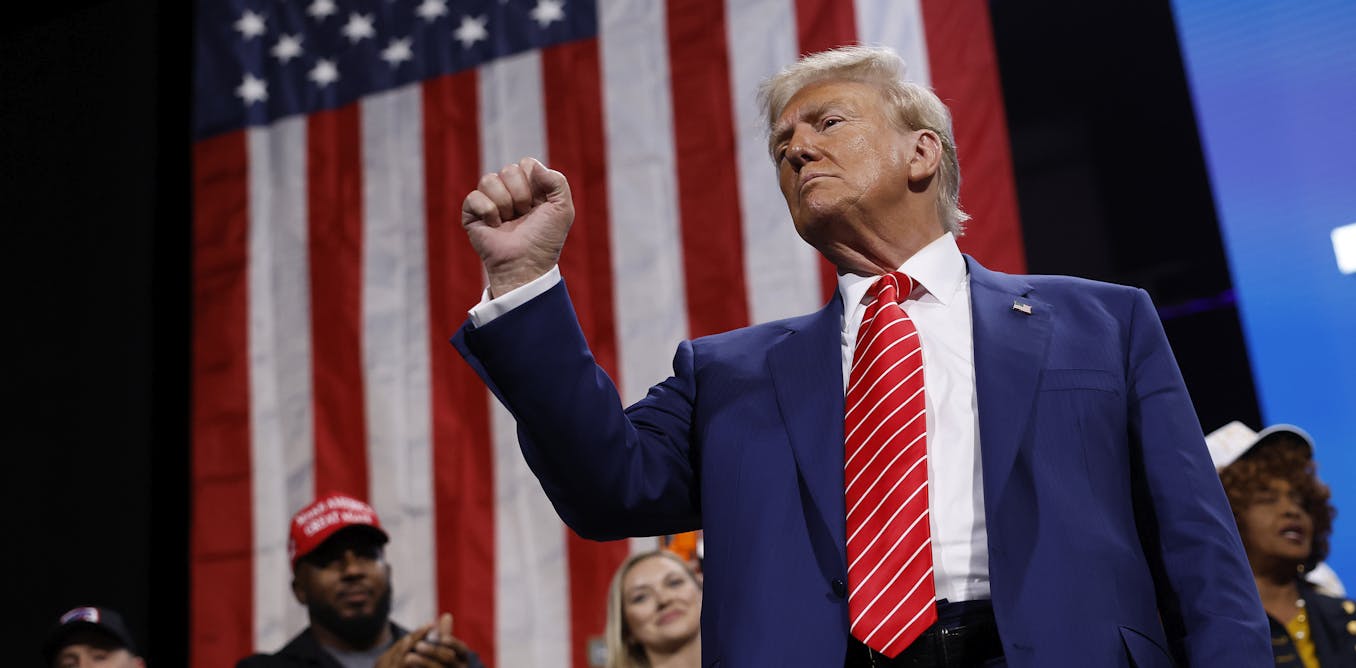How many times in your life can you say that one of the culture-defining platforms of your era is being forcibly removed? This is what will happen to the one third of American adults who use TikTok – and the other two-thirds whose lives have been undoubtedly affected by it – if the US supreme court upholds its ban on the Chinese-owned app, as it is expected to do on 19 January, in the interests of national security.
I have spent the last few years researching instances of linguicide, where authoritarian regimes have burned dictionaries, or sent people to prison just for singing a song. I see alarming parallels with the dismantling of TikTok in the US; a ruthless cull of a communication tool that challenges Silicon Valley hegemony and gave the US a serving of what it is allegedly supposed to prize: healthy, full-fat competition.
TikTok emerged in the late 2010s as the tool to save us from one of the great evils of social media: follower counts. Before TikTok appeared, the main social platforms of the time – Facebook, Instagram and Twitter – heavily relied on what is known as a social graph. Content would be amplified to you based on who you followed, and the existing connections between users. The social graph supported traditional celebrity and media hierarchies; if you had a familiar name, or a legacy brand, you’d win followers immediately and you would simply pattern your offline fame on to your online one.
But ByteDance, the developer of TikTok, didn’t focus on them. ByteDance saw all the Americans with 54 followers photographing their flat-lay brunches, their endless vlogs, their irrepressible desire to tell the world who they were, what they were doing, and what they wanted to be. First, ByteDance thought: we can sell that. The next thing they thought was: we can sell to that.
Out was the social graph, and in was the interest graph; let’s group people not by who they happen to be connected to, and how famous they are, but instead by their interests. And let’s reward creators who make interesting content. TikTok has many flaws – but few would dispute it has democratised the visual internet.
It is as much the vertical video format, perfectly sized for smartphone consumption, as this interest graph that brought the app its stratospheric success. Even YouTube had never given users their own mini-editing suite to make videos before. Here was an app that not only gave you the tool, but which artificially boosted your first video to give you that sweet, dopamine-laced hit of your first viral masterpiece.
I should know – it happened to me. I was a very young journalist, with the respectable couple-of-thousand following you accrue from working in the media, half self-promoting, half-shitposting. I made my first TikTok and everything changed – 1,400 new followers in a day. I kept doing it, and I didn’t stop. This wasn’t just an app for music and dancing; people were talking about the news and, refreshingly, their place in it. Five years later, 17% of all US adults regularly get news from TikTok. It has put me in front of far more people than legacy media ever has – and I am a former BBC journalist. It has done the same for countless others, almost overwhelmingly young people, who, seemingly abandoned by mainstream media, took the chance to represent themselves.
I use TikTok to news-gather and raise the reach of my stories to millions of people worldwide. Authors have used it to drive sales of their books, musicians have used it to hit No 1 or resurrect old hits. Practically an entire generation has used it to call for an end to atrocities in Gaza. Speak to anyone in their teens or 2os today, and every time someone enjoys a “girl dinner”, declares that something is “giving” or spends five hours filming and editing the minutiae of their lives like it’s a Wes Anderson film, know that not only has part of their vocabulary and worldview been formed on TikTok – it has been formed specifically by American creators, born in the land of the free content that forever altered how we consume media.
The interest graph, the short video format and the ability to instantly react and innovate has still not been adequately replaced by YouTube or Instagram, and will disappear for US creators. The US government is taking away more than an app; it’s taking away news, expertise and, ultimately, influence. I would say it’s the most stupid media decision of the 21st century despite only being a quarter of the way through it, if I didn’t fear worse coming from Elon Musk and Mark Zuckerberg. Already, American TikTok users are flocking to RedNote – an app also owned in China.
With the app closed off to US citizens, those outside the country also stand to bear a somewhat unquantifiable loss. I will lose an indispensable part of my journalistic toolkit and my ability to represent global audiences. As a creator, I’ll lose the daily access that has so influenced my videography and my reportage. And as a user – one of the 23 million in the UK, and 150 million in Europe – it is like someone is walking into my local library and stealing half of its books before I ever had a chance to read them.
-
Sophia Smith Galer is a journalist, content creator and the author of Losing It

 German (DE)
German (DE)  English (US)
English (US)  Spanish (ES)
Spanish (ES)  French (FR)
French (FR)  Hindi (IN)
Hindi (IN)  Italian (IT)
Italian (IT)  Russian (RU)
Russian (RU)  5 hours ago
5 hours ago
























Comments